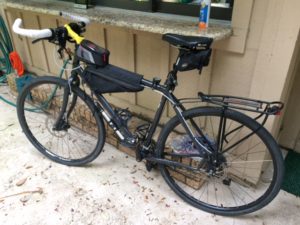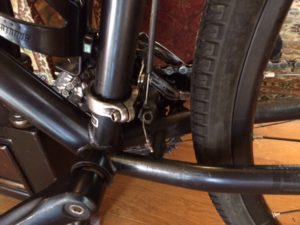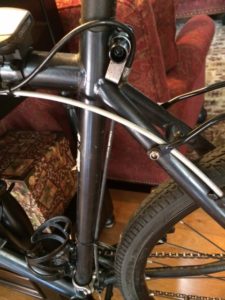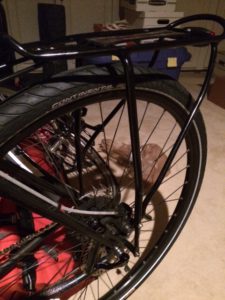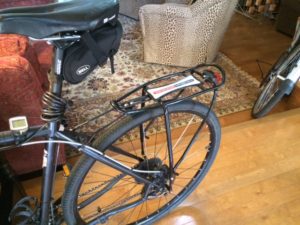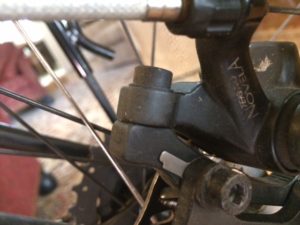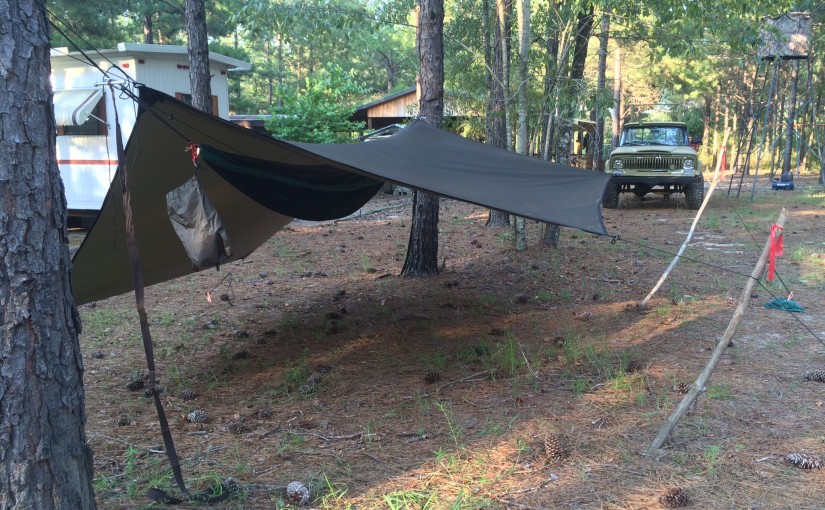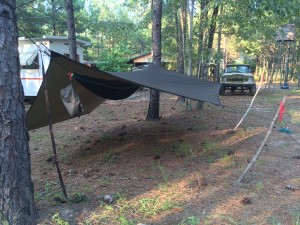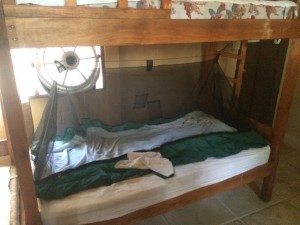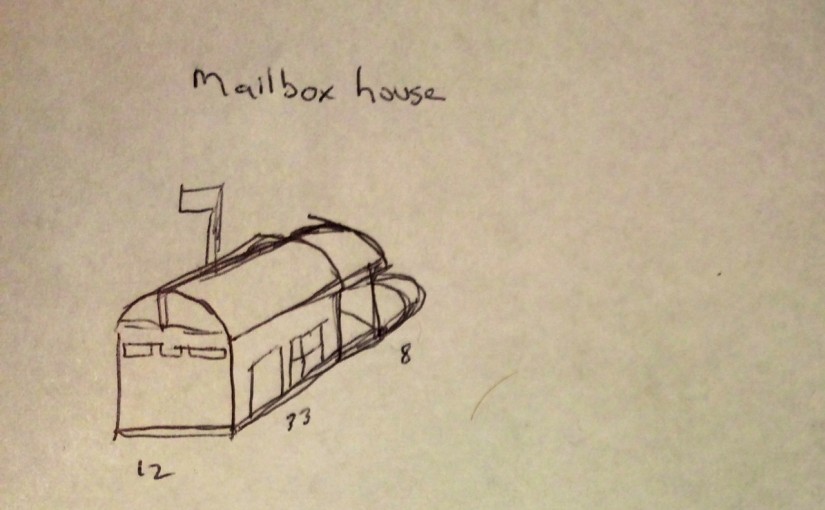The economics of zoning, construction and living large.
by Beau Blessing, April 21, 2015
Passing through Jackson, Wyoming on a cross-country bicycle trip, I’d heard of a skiing instructor living in a teepee in the Gros Ventre Wilderness for an entire season without being moved along. The Jackson Hole valley, a cowboy would offer, was “where the billionaires were pushing out the millionaires”. I personally poached a camping spot off of Cash Creek Road in town, stealth camping for ‘free’ against the $179 lowest nightly rate for a hotel room, and this after paying $38 to pitch a tent on a gravel RV site out towards Wilson the night before. In Montana, I’d met a car camping jolly old timer exploiting the National Forest’s 14-day consecutive camping limit in Kootenai, soon heading on for more of the same, and in Mesa Verde, spent a few days with a disabled Vietnam veteran who moved among the Nation Parks enjoying the country’s great sites on discount, with the odd hotel stay and proper bed calling every 5 to 8 days, as it were. A couple passing through Jacob Lake lived in their RV full time with an Arizona mailbox etc serving for domicile address. In my home state of Florida, seasonal residents rent a patch of land for park model RVs while minimizing certain taxes; my grandmother does so full time.
There’s a lot of ways to save on shelter without being rooted to the land. Hitching over Togwotee pass two days out from the town of Jackson, I shared a ride with a woman who lived and worked there enough to know; she was on her way to view a trailered cabin for sale in Dubois that could be hauled back for her own living quarter. Later, I learned that the median sale price of a home there was $749,000, qualifying her effort (TownofJackson.com). Cranking along on a bicycle for five months, I stealth camped and paid camped, ever ready to answer the risk of being asked to move along or pay more with economic “exit”, having little skin in the game. My nightly rate for a patch of land on which to camp averaged about $8. This, for 24 square feet of nylon tent considered spacious by hiking standards. (By comparison, a queen mattress is 33 square feet).
Which returned my thinking to consider the value of transient possibilities and living for less, longer term.
Gimme Shelter
Shelter is a principal need, according to Abraham Maslow. As a general rule, it is suggested that no more than 30% of one’s income should go towards it. Maintenance costs add another 1-3% of the homes value to the ticket annually. But housing is one of three areas where capitalism “has singularly failed to operate” according to the Economist Newspaper. (Capitalism begins at home, Economist, Jan. 10, 2015, available at Economist.com.) In fact, housing could very well be the biggest source of rising inequality, due in part to “planning restrictions which, by inhibiting new construction, allow homeowners to earn such big returns on their assets”. (Inequality and housing: Through the roof, Economist, Mar. 28, 2015, available at Economist.com.) In a response to Thomas Piketty’s claim in his book, Capital in the Twenty-First Century that growing returns on captial in recent history are outstripping actual economic growth, quasi-contrairian Matthew Rognlie, a graduate student at the Massachuesetts Institute of Technology, instead looks to return on assets other than housing to suggest “housing wealth” is as much to blame. (ibid.) As the Economist explains, “home ownership is not especially egalitarian. Many households are priced out of more vibrant places. It it no coincidence that the home-ownership rate in the metroploitan area of downtrodden Detroit, at 71%, is well above the 55% in booming San Franscico.” (Urban Land: Space and the city, Economist, April 4, 2015, available at Economist.com.)
Bloomberg recently highlighted a report from Zillow, a real estate information service, that identified a relationship between scarcity of construction and housing outflows it considered unafforable. It notes the “correlation isn’t perfect-New York metropolitan area remain prohibitively expensive despite building activity that is near the national average, and rental affordability can be somewhat misleading. (Housing costs more in NY than Houston, but new Yorkers are less likely to be making monthly car payments.)” (Patrick Clark, Why the Most Popular Cities Are Out of Reach for Young Professionals, Bloomberg Business, March 27, 2015, available at Bloomberg.com.) But this language of scarcity can be compared with the epic growth of free sprawling Houston, where the Economist notes in another article that though the city’s growth “infuriates new urbanists who insist that dense, walkable places such as Manhattan or San Francisco are the future”, it nonetheless remains “a place to live well cheaply” (Houston’s economy: Life in the sprawl, Economist, Mar. 14, 2015, available at Economist.com.) Yet nationally, already, builder reported low supplies of lots are driving up lot costs. (Taylor).
According to Zillow.com, the median rent list price in Tampa, Florida is $1,225 and $1,355 nationally. Like most Florida cities, Tampa would not be considered so walkable as to exclude requiring a car. Following our rule of thumb, a person’s monthly take home would need to be a little more than $4,000 in order to afford renting among the lowest priced half of homes. In the US, $50,033 is the income at which there are as many full-time, year-round working males making more as there are making less, and yet it is still surprisingly short of affording the middle U.S. rent (DeNavas-Walk & Proctor, Income and Poverty in the United States: 2013, September 2014, available at census.gov.) Of course, taking on a roommate is one way to reduce outflows, increasing utilization of common areas and thus lowering the marginal square foot requirements by sharing. Military sailors regularly take over ‘hot bunks’, sleeping shifts in common beds, while submarines tile the vessels’ floors with canned goods that is eaten down underway. Attractive by comparison, recent college grads should be glad for the ability to tolerate shared housing until one comes to value privacy and free range so greatly that they’ll pay for it.
Economic Housing Quantity
Another option is right sizing. An estimate of the national average building cost per square foot is $94 (census.gov). Assuming a linear relationship of cost and square feet, building or renting a smaller space could reduce monthly outflow as one moves down such a curve. Interestingly, and equally as frustrating, is a difficult to exploit relationship between volume and area: Whereas area increases squared, volume increases cubed. The insight is that surface areas increase costs while volume increases living space, but only by so much; we live in standardized, two dimensions, with things like 8 ft ceilings and 6’8” door heights often codified to accommodate typical head heights.
Moreover, one might be surprised to find that their economically optimal quantity of living space faces other hurdles. Right sized to income but tiny site built homes may fall below local zoning created thresholds. That housing is an annualized liability, this may be especially true of some service and hospitality jobs where earnings show seasonality, or more acutely, do not exist the entire year such as skiing instruction. Even at the conforming but low end of the size spectrum, a permanent or site built house that just meets code requirements may still face an uncertain resell environment. Already it is generally accepted that a 2 bedroom fetches more per square foot than say, a one bedroom or studio. Even the most talented architect may be pressed to carve up a small print to overcome this market reality, self-imposed or otherwise.
County and city ordinance and even privately contemplated deed restrictions that specify minimum footprints may also prohibit certain types of living units, such as mobiles. Observed nuisance ordinances appear less demanding, with minimum standards such as a 150 square ft of floor space the first occupant, and 100 more for each an additional occupant, along with a water closet and kitchen sink with hot and cold water (municode.com). Clearly, some restrictions are well-intentioned efforts to protect citizens’ health, safety and welfare, while many land-use regulations are simply a result of ‘nimby’ phenomena (Not In My BackYard). But regulatory restrictions to growth lead to market mismatch by limiting houses in areas where there is high enough demand for them. Even in the great metropolises like London, Mumbai and New York “the scarcity is artificial. Regulatory limits on the height and density of buildings constrain supply and inflate prices”. Consequently, “high housing prices force workers towards cheaper but less productive places”. (Urban Land, Economist).
Moving On
Dubbed “tiny houses” by popular culture and reality based television shows, it is not hard to see why many folks are opting for custom micro units that can be either hauled or share space alongside other permanent structures. Importantly, they can also offer owners an opportunity to self-contribute. The average price per square foot for new single-family home sold in 2013 was $93.70 (census.gov). Total construction costs account for about 62% of the sales price with 19% going to the finished lot (Taylor). Of construction costs, the largest share at 17% goes to framing and trusses (ibid). At $94 square foot, a 12×26 micro home should cost nearly $30,000. But building 400 square feet of stick-frame is a manageable project for many folk. Not only are direct labor costs converted to savings, in areas where higher labor inputs are attributable to land-use created mismatch, self–building offers non-parametric returns. Another option can be to first build in a lower cost market, though transportation costs upwards of $7 per hauled mile can drive off such savings.
Obliviously, where “nimbyish resident of low-density districts…exploit planning rules on everything from light levels to parking spaces to block plans for construction” (Economist), its hard to imagine the neighborly acceptance of micro mobiles. When cousin eddy shows up announced to the Griswold residence in the holiday send-up, “Christmas Vacation” he warns Clark not to “go falling in love with” the ramshackle RV in his driveway “…because we’re taking it with us when we leave here next month.” In fact, the author’s home county of Pasco, Florida limits the stay of an RV or travel trailer to just seven days on residential property, up to 30 consecutive days with permit. Otherwise, such a unit must be placed in a properly zoned RV park.
Already there are numerous tiny house communities in practice or being set up across the US, according to a blog by Cat Johnson (shareable.net). Indeed, some are being zoned RV parks while others are demonstration-only examples of “urban infill”. Intentions range from commercial (a hotel made up of small trailers in Portland) to civic desires to house the homeless. Portland’s non-profit Micro Community Concepts proposed “micro communities” that are in the works aim to lower rent for the working poor, though a change in original strategy from imported units to locally built ones may defeat the economics (the effect of vowing that rent “doesn’t go to developers, shareholders, or bankers” is less clear). Moreover, a tax on land, “…no matter how heavily it’s taxed, …will not reduce its supply. As a result, such taxes are relatively efficient—they don’t distort incentives or activities” (Erik Brynjolfsson & Andrew McAfee, The Second Machine Age, at 226 (1st ed. W. W. Norton & Co. 2014.) As a policy tool, “…a high tax on land creates an incentive to develop unused sites”, freeing up space for growth. (Urban Land: Space and the city, Economist, April 4, 2015, available at Economist.com.) Thus, efforts to demonstrate long-term urban infill may too miss a larger opportunity.
George Orwell, obsessed with poverty and the working poor, periodically tramped off for a life on the cheap. Mark Twain thought it wise to invest in land; they weren’t making anymore. Ken Kesey boogied across the U.S. in the repurposed school bus, ‘Further’, spreading merry and promoting psychotropic drugs. Is there room for everyone in a tiny house?
Perhaps the best case for a tiny house other than the freewheeling libertarian that doesn’t mind dodging restrictions or moving on every once in a while, is in a properly zoned RV park where there are opportunities to “share resources and take advantage of economies of scale.” (DeNavas-Walk & Proctor, Income and Poverty in the United States: 2013, September 2014, available at census.gov.) RV parks have been around since RVs though a hip factor stands to influence the development of next generation parks with more energetic opportunities for engaging with neighbors than staid shuffleboard. While zoning for new parks may hit its own roadblocks of nimbyism, policy changes could facilitate impermanent arrangements that collectively offer long-term solutions through improved utilization of cities’ most desirable space, at least for those considered in need of state help. Indeed, where existing public facilities and services are in place (such as “urban service areas”) and taxes on unimproved or vacant land high, a scheme of issuing tax credits to landowners who temporarily host a micro community of platform-based homes for a set number of years could encourage interim use while awaiting future development.
You’re either on the bus…
For still others, there is a Port Royal appeal in going small and dodging dogged regulation for a life free from the tyranny of geography. Those wishing to use thrift to finance entrepreneurship while holding back old school capitalism inertly at the gates could benefit also. Staying on land but mobile offers the ability to match living location with terrestrial work, while allowing some economic exit. Generally, maximizing the footprint of a house to its movable foundation is the surest way to distribute the relatively fixed cost of the platform itself whether wheeled or hauled (or even floated). A wheeled abode no wider than 8.5 feet and no taller 13.5 can be trailered without restriction, while the trailer itself gives the practical length constraint, perhaps as long as 33 feet, for a grand floor space of around 280 square feet. But pushing out to 12 or 14 feet offers some surprisingly roomy floor plans as the 400 square feet mark is neared. A special permit is required for such wide loads, and in Florida can be self-issued online. Weight considerations are a factor to mobility as well and the cost of moving an oversized load goes beyond a reasonably inexpensive special permit to include hiring pilot vehicles along with the actual hauler.
But its hard to ignore that a secondhand travel trailer offers shelter too; a 26 foot Argosy from 1977, for example, will set you back only $5,700. The “painted airstream”, it was produced by Airstream in a separate facility beginning just a few years after the company’s purchase by Beatrice Foods in the late 1960’s. Using lower cost methods and materials, and covering over otherwise blemished panels with paint, the brand served as a test bed for their polished aluminum stalwart (“VintageAirstream.com”, 2015. Online.) But rather than a shinning example of capitalism bringing a ‘want’ within reach of the masses, the plant was closed and the line and brand discontinued when Airstream was sold off in 1978 (ibid). Nearly a decade later, Beatrice itself was acquired by the private equity firm KKR, likely financed with “junk bonds, bank loans and a little cash” (Atlas). Still, its economical shelter, ready made and ready for the road. It just may be finding a place to park it that turns out to be the real economic challenge.
References:
Town of Jackson Municipal Services, 2013. Online. www.townofjackson.com/about-jackson/housing/
Capitalism begins at home, Economist, Jan. 10, 2015, available at Economist.com.
Inequality and housing: Through the roof, Economist, Mar. 28, 2015, available at Economist.com.
Patrick Clark, Why the Most Popular Cities Are Out of Reach for Young Professionals, Bloomberg Business, March 27, 2015, available at Bloomberg.com.
Houston’s economy: Life in the sprawl, Economist, Mar. 14, 2015, available at Economist.com.
Yahoo!-Zillow Real Estate Network, 2015. Online. www.zillow.com/tamp-fl/home-values/
DeNavas-Walk & Proctor, Income and Poverty in the United States: 2013, September 2014, available at census.gov.
Urban Land: Space and the city, Economist, April 4, 2015, available at Economist.com.
U.S. Census Bureau. 2013. Characteristics of New Housing. www.census.gov/contruction/chars/highlights.html
Heather Taylor, New Construction Cost Breakdown: Special Study for HousingEconomics.com, National Association of Home Builders, January 2, 2014 available at www.nahb.org courtesy of HousingEconomics.com
www.municode.com/library/fl/pasco_county/code_of_ordinances/pticoor_ch18bubure_artvmihost
Cat Johnson, “11 Tiny House Villages Redefining Home”, September 17, 2014, www.shareable.net/blog/11-tiny-house-villages-redefining-home
“MicroCommunityConcepts.com,” Online.
Erik Brynjolfsson & Andrew McAfee, The Second Machine Age (1st ed. W. W. Norton & Co. 2014)
National Lampoon’s Christmas Vacation (John Productions 1989)
Rivad Atlas, What’s An Aging ‘Barbarian’ To Do?, New York Times, August 26, 2001, available at NYTimes.com.
“VintageAirstream.com”, 2015. www.vintageairstream.com/frequently-ask-questions-faq/general-notes-history/
